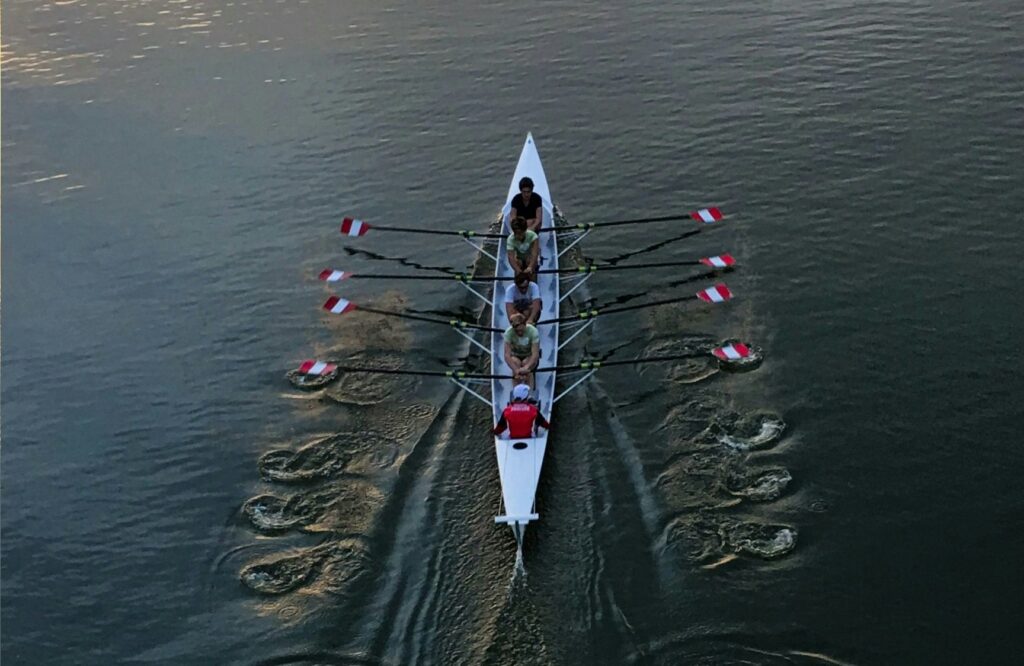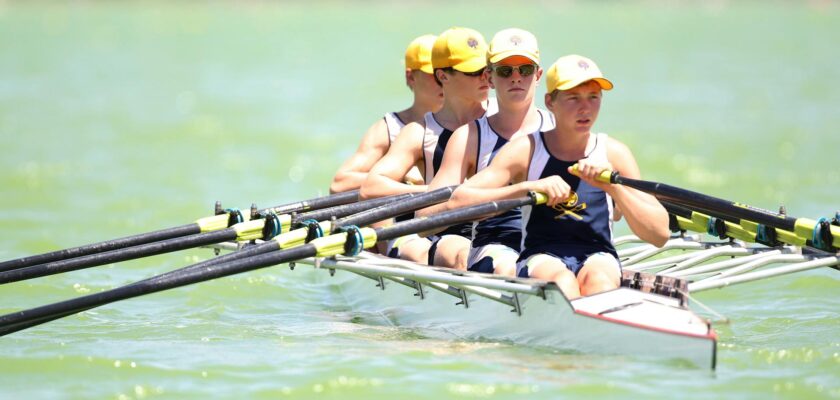Rowing is a very popular sport that has gained many fans and enthusiasts throughout its history. With the advancement of the paralympic movement, adapted rowing emerged, designed for athletes with physical, visual or intellectual disabilities. Check out the types and modalities of paralympic rowing to stay up to date with this practice!
Paralympic rowing emerged in the mid-1980s, with the first competition taking place in 1988 in Seville, Spain, at the Paralympic Summer Games.
The sport became part of the program of the Paralympic Games in 2008, in Beijing, China, and today more and more countries are investing in development and support programs for athletes with disabilities.
Without further ado, let’s go into detail about the sport and present each of the types and modalities!
Participate in our free community on Whatsapp and receive daily tips, news and curiosities from over 50 sports! Click here to participate.
Types and disciplines of Paralympic rowing
The types and disciplines of Paralympic rowing are defined on the basis of the athlete’s degree of disability. This is done to preserve the safety of those involved and to promote fairness. See each one:
PR1
The PR1 discipline is aimed at athletes with reduced functionality, characterized by total or partial paralysis of the legs and trunk. This can include other disabilities that significantly affect the ability to move and coordinate.
Here are some of the types of disabilities that can be part of the PR1 Para-Removers discipline:
- Spinal cord injury (paraplegia or tetraplegia)
- Cerebral palsy with significant limitation of trunk and lower limb mobility
- Myopathies or muscular dystrophies that affect muscle mobility and strength
- Bilateral amputations or severe limitations of movement due to orthopedic conditions

PR2
For its part, the Para-Remadores PR2 modality is aimed at athletes with a moderate level of functionality, compared to the PR1 class. This can include disabilities that affect mobility and strength, but which allow a reasonable level of independence and capacity for movement.
The disabilities that make up the PR2 Para-Runners discipline include:
- Unilateral or partial lower limb amputations
- Musculoskeletal impairments that affect mobility and strength, but allow a reasonable level of independence and capacity for movement
- Some forms of cerebral palsy with preserved mobility and moderate muscle strength
- Other medical conditions or injuries that result in a moderate level of physical functionality
PR3
In the PR3 class, athletes have a higher level of functionality compared to the PR1 and PR2 classes.
In this case, we are talking about disabilities that affect mobility, strength or coordination, but which allow a significant level of independence and capacity for movement.
The sport can integrate disabilities such as
- Unilateral or partial lower limb amputations
- Musculoskeletal impairments that affect mobility, strength or coordination, but which allow a significant level of independence and capacity for movement
- Some forms of cerebral palsy with preserved mobility and significant muscle strength
- Other medical conditions or injuries that result in a higher level of physical functionality
Types and disciplines of Paralympic rowing: events
In addition to classifications based on the athletes’ physical disabilities, another separation in Paralympic rowing competitions is the type of races. In other words, it’s possible to race individually, as a pair or in a team of four. Below, we explain each of these types of races.
Single Scull (Skiff)
In the Single Scull (Skiff) discipline, a single rower uses two oars for propulsion. The narrow, elongated boat is approximately 8.2 meters long and has only one position for the rower. It is designed to be stable enough for the rower to row without the need for a teammate to help with balance.
In Single Scull, the rower uses one oar in each hand. Each oar is attached to a pinlock on the deck of the boat and is moved alternately from side to side to provide thrust.
Double Scull
In Double Scull, two rowers use two oars each. The boat is usually 10.4 meters long. The rowers need to coordinate their movements to maintain the rhythm and efficiency of the stroke.
In other words: in this discipline, the two rowers need to row in sync, adjusting their rhythm and technique to ensure that the boat moves through the water.
In Paralympic rowing competitions, it is the PR2 and PR3 athletes who usually compete in this discipline.
Four
Four involves a 13.4-meter-long boat designed to accommodate four rowers: one behind the other in a row, each with a single oar.
In addition to the rowers, the boat usually includes a fifth team member, called a coxswain, who sits at the back of the boat to provide direction and guidance during the race.
The technique of rowing in the Four also requires synchronization between the athletes. The PR2 and PR3 classes compete in this discipline.
Quad Scull

In the Quad Scull, there are also four rowers. The difference is that they use two oars each.
As with the Four, the boat usually includes a fifth team member, called a coxswain, who sits at the back of the boat to provide direction and guidance during the race.
The rowers move the oars alternately from one side of the boat to the other to provide momentum. The Quad Scull rowing technique requires synchronization and coordination between the four rowers to maintain rhythm and efficiency.
Now that you’re informed about the types and disciplines of paralympic rowing, it’s worth continuing to follow our content to gain an in-depth understanding of the world of sports:




